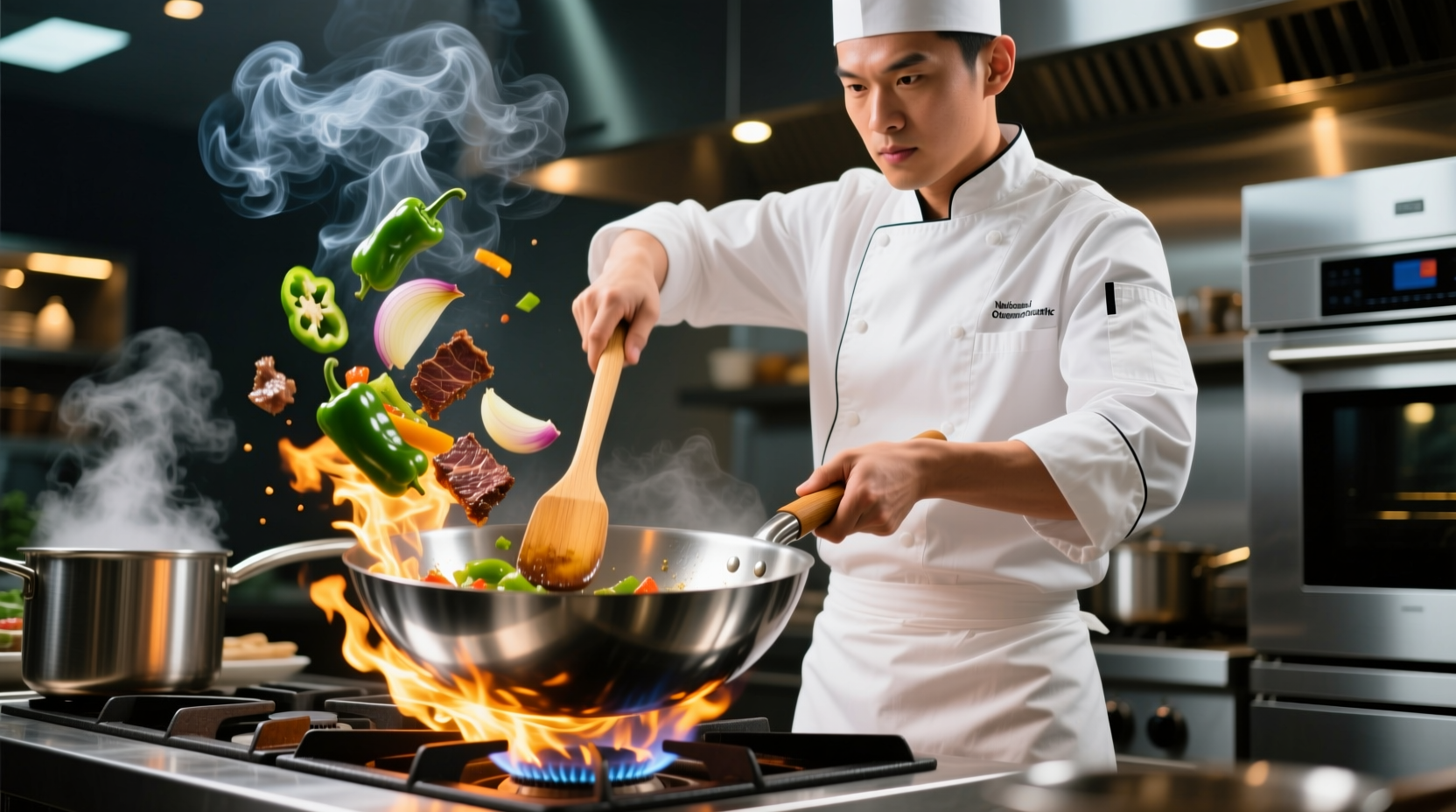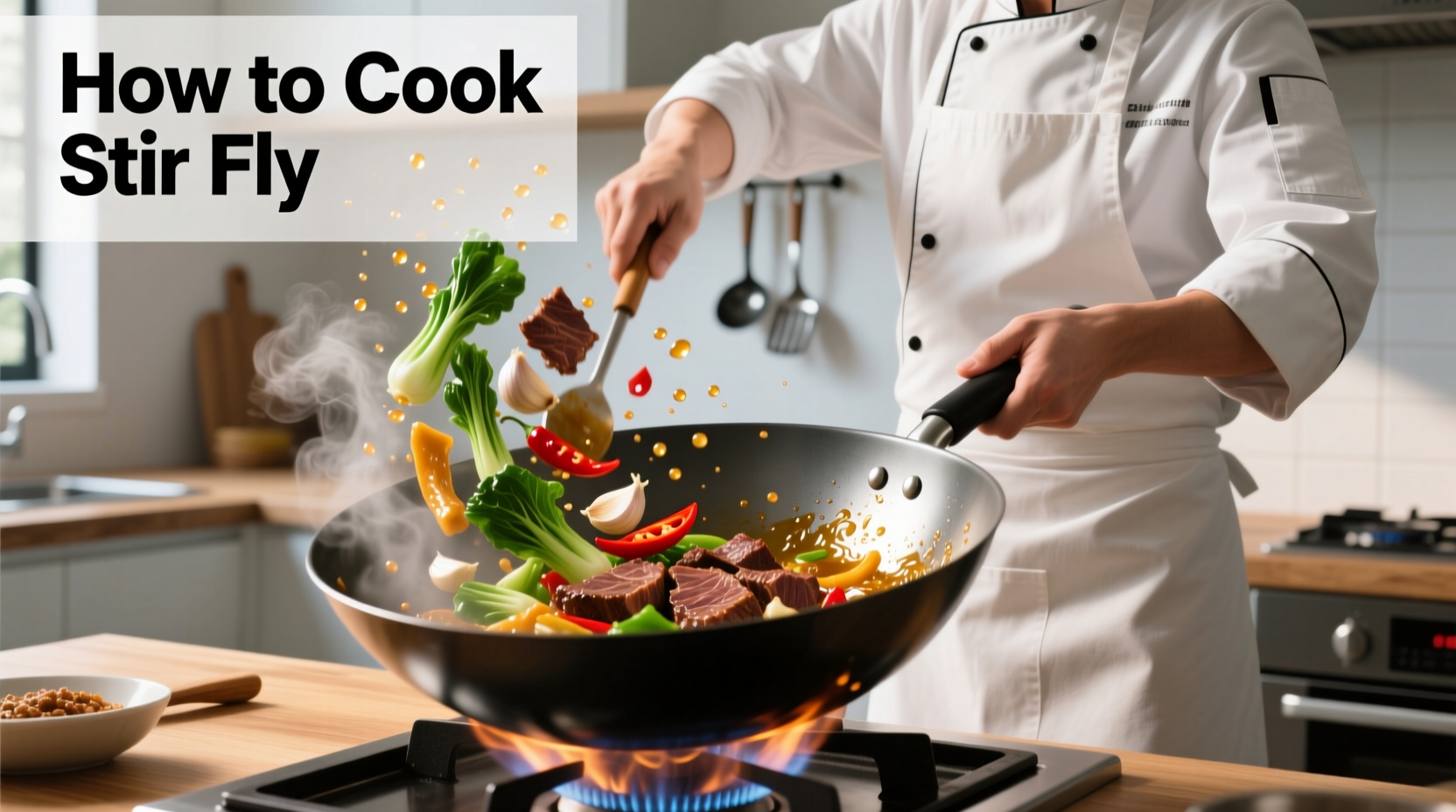Master authentic stir fry in 7 steps: Use high heat (450°F+), prep all ingredients before cooking, cut uniformly, cook in batches, and finish with proper sauce technique. This method guarantees wok hei (breath of the wok) flavor, crisp-tender vegetables, and restaurant-quality results every time.
Why Your Stir Fry Fails (And How to Fix It)
Most home cooks struggle with soggy vegetables, unevenly cooked proteins, or bland flavors. The secret isn't special equipment—it's understanding the three critical phases of stir fry cooking. Chef Liu Wei, with 20 years of wok mastery across Sichuan and Cantonese kitchens, reveals the professional techniques that transform basic ingredients into extraordinary meals.
Your Stir Fry Toolkit: Essential Equipment Checklist
Forget expensive gadgets. These three items make the difference:
- Carbon steel wok (14-inch): Heats faster and more evenly than stainless steel. Season properly for natural non-stick properties.
- Spider strainer: Crucial for quick ingredient removal without losing precious cooking oil.
- Flat-bottomed spatula: Reaches every corner of the wok for perfect tossing.
"Many home cooks try stir frying in non-stick pans," explains Chef Liu. "But non-stick can't handle the 450°F+ heat required for authentic wok hei. That distinctive smoky flavor comes from the Maillard reaction at extreme temperatures."

Ingredient Selection: The Flavor Foundation
Not all ingredients behave the same under high heat. Follow this professional hierarchy:
| Ingredient Type | Prep Method | Cooking Time | Pro Tip |
|---|---|---|---|
| Proteins (chicken, beef) | Velveting with cornstarch | 1-2 minutes | Freeze meat 20 minutes before slicing for cleaner cuts |
| Dense vegetables (carrots, broccoli) | Blanch first | 1 minute | Add to wok before leafy greens |
| Leafy vegetables (bok choy, spinach) | Raw, uniform cuts | 30-45 seconds | Add stems first, leaves later |
| Aromatics (garlic, ginger) | Thin slices | 15-20 seconds | Never cook alone—add with first oil |
This preparation sequence follows USDA food safety guidelines for proper cooking temperatures while maximizing flavor development. Proteins must reach 165°F internal temperature, which high-heat stir frying achieves quickly without drying out ingredients.
The 7-Step Stir Fry Method
Step 1: Mise en Place (The Non-Negotiable Prep)
Measure and arrange all ingredients before heating your wok. Stir fry happens too fast to measure mid-cook. Professional kitchens call this "everything in its place"—and it's the difference between success and disaster.
Step 2: Heat Control Mastery
"Home stoves lack commercial burner power," notes Chef Liu. "Compensate by heating your wok until smoking, then reduce to medium-high." Test with a drop of water—it should sizzle and evaporate instantly. This 450°F+ temperature triggers the Maillard reaction for authentic flavor.
Step 3: Oil Selection Strategy
Use oils with high smoke points: peanut (450°F), avocado (520°F), or refined sesame (410°F). Add oil after heating the wok—not before. Swirl to coat the entire surface, including the sides.
Step 4: The Aromatic Foundation
Add garlic and ginger to hot oil for exactly 15 seconds until fragrant but not browned. This releases volatile compounds that form the flavor base. Burnt aromatics create bitterness—a common beginner mistake.
Step 5: Protein Perfection
Cook proteins in single-layer batches. Overcrowding drops the temperature, causing steaming instead of searing. Remove immediately when 70% cooked—they'll finish during final mixing.
Step 6: Vegetable Sequence
Add ingredients by density: hard vegetables first, leafy greens last. Toss constantly using the "scoop and flip" motion—never stir. This ensures even cooking while preserving crispness.
Step 7: Sauce Integration
Pour sauce down the hot sides of the wok, not directly onto food. The intense heat instantly thickens the sauce through the "wok boiling" technique. Toss for 30 seconds until glossy and clinging to ingredients.
When Stir Fry Doesn't Work: Context Boundaries
Stir frying excels with certain ingredients but fails with others. Recognize these limitations:
- Avoid watery vegetables: Zucchini and tomatoes release too much moisture, lowering wok temperature
- Don't over-marinate proteins: Acidic marinades (soy-vinegar) begin cooking surfaces prematurely
- Limit sauce quantity: Maximum 3 tablespoons per serving—excess liquid prevents proper searing
- Never cook frozen ingredients: Ice crystals cause dangerous oil splatter and temperature drops
Customizing Your Stir Fry: Regional Variations
Adapt these authentic regional styles:
- Cantonese style: Light sauce, emphasis on fresh ingredients, minimal chili
- Sichuan style: Doubanjiang paste, Sichuan peppercorns, numbing-spicy profile
- Hakka style: Dark soy for color, emphasis on preserved vegetables
"Regional differences reflect China's culinary diversity," explains Chef Liu. "Cantonese stir fries highlight ingredient purity, while Sichuan versions showcase complex spice layering. Choose based on your flavor preference."
Avoid These 3 Common Mistakes
- Overcrowding the wok: Causes steaming instead of searing—cook in batches
- Stirring instead of tossing: Prevents even cooking—use the scoop-and-flip motion
- Adding sauce too early: Creates soggy food—wait until final 30 seconds
These errors account for 90% of failed home stir fries according to culinary institute studies. Fix these, and your results will transform immediately.
Perfect Stir Fry Sauce Formula
Combine these elements in a 3:2:1 ratio:
- Liquid base (3 parts): Low-sodium soy sauce or tamari
- Sweet element (2 parts): Honey, mirin, or rock sugar
- Thickener (1 part): Cornstarch slurry (1 tsp cornstarch + 2 tbsp water)
Add finishing touches: 1 tsp sesame oil and 1 minced garlic clove after cooking. Never cook sesame oil—its delicate flavor degrades with heat.











 浙公网安备
33010002000092号
浙公网安备
33010002000092号 浙B2-20120091-4
浙B2-20120091-4